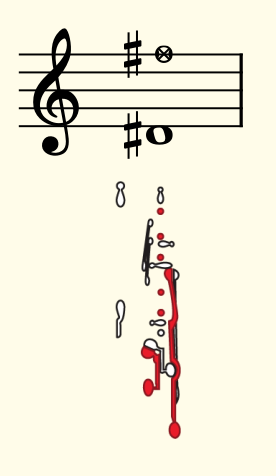In 2016 when I commissioned composer Jeffrey Ryan to write a contemporary work for tárogató and piano, I discovered the rich world of multiphonics for the tárogató, none of which to my knowledge have ever been documented. This is numero uno in a series of posts to document what I have learned about extended techniques for this instrument.
Below, I have recorded the first multiphonic, one built on the low D# (1) and which coaxes an F# in the second octave (2).
I’ve notated it as follows:

This isn’t a particularly easy multiphonic to start with. It wants to just give a bland-grey nothing sound, so you need to ensure you play with a slack jaw and focus on the low D sharp. Fortunately, Jeffrey scored his Arbutus with the instructions “allow lower note of multiphonic to emerge first” (although I may have had a hand in those instructions).
About the fingering chart: I play a tárogató that uses a German (Albert) fingering system, so if you’re playing on a French (Boehm) system, Dieu vous aide.
Here’s a short recording of what this multiphonic is meant to sound like: